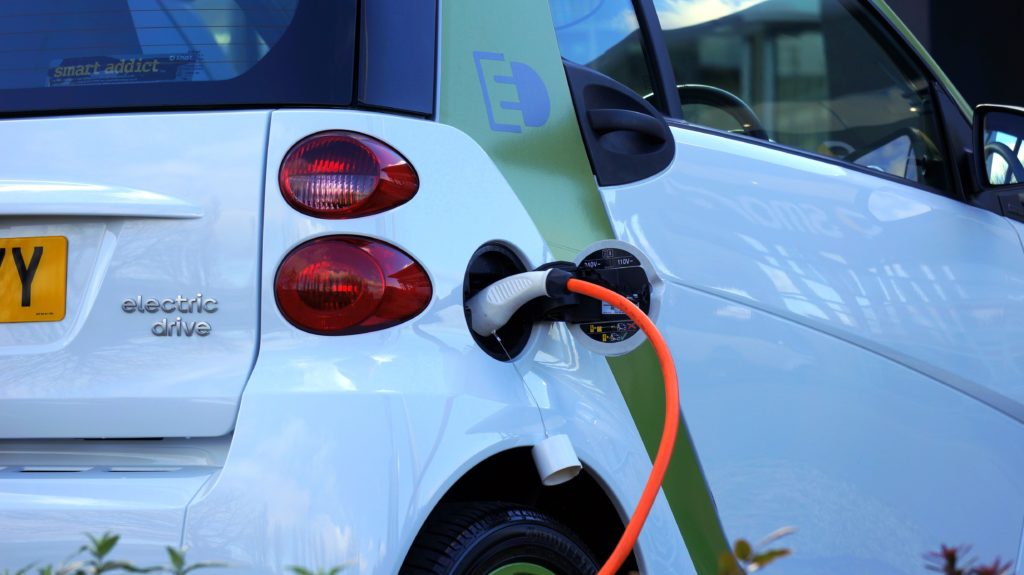A great change in the automotive industry is taking place in Germany. No less than 2.2 million employees are affected by this change in Germany's most important industrial sector. In the coming years, they will face challenges such as the trend toward electromobility, the introduction of autonomous driving functions, the emergence of new mobility services and the increasing automation of manufacturing processes.
In this article, we take a closer look at the named challenges for the automotive industry and elicit what they mean and will mean for HR managers and leaders.
Change in the automotive industry: E-mobility
The current coalition agreement sets an inventory target of 15 million fully electric cars on Germany's roads by 2030. And automakers are responding. Audi, for example, has decided to produce only electric cars from 2033 . The last years of the combustion engine, you could say, are numbered.
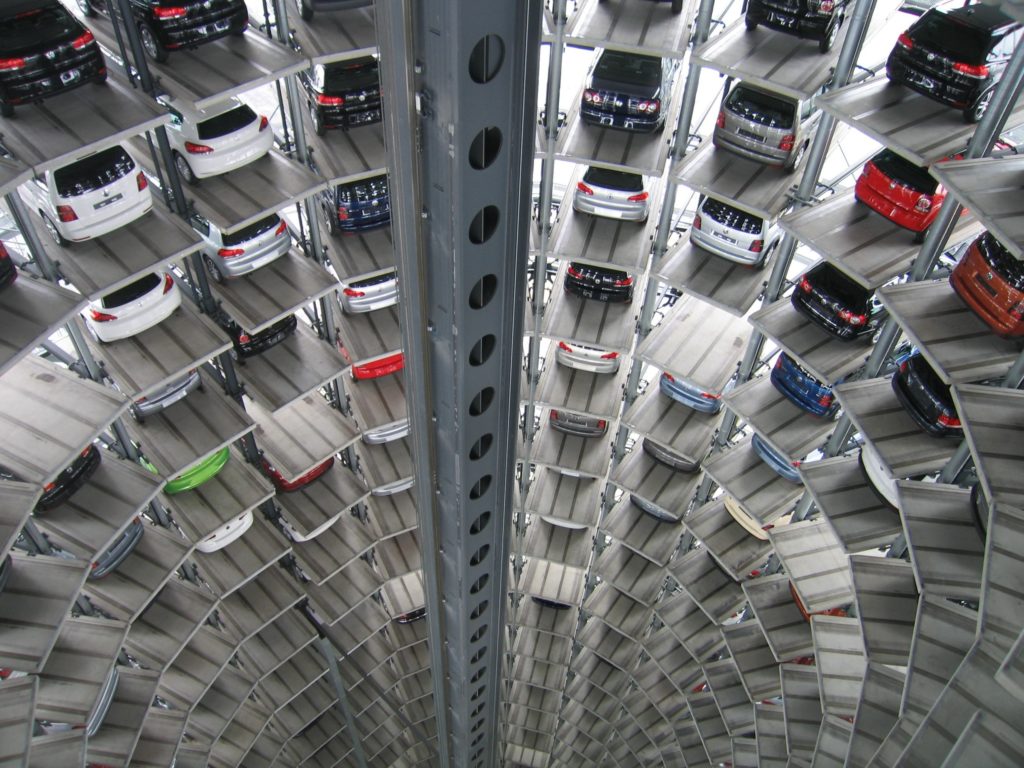
The switch from combustion engines to e-drives will have a positive impact in many respects. In this context, it is particularly important that Germany's dependence on fossil fuels is reduced and, at the same time, emissions that are harmful to the climate and to health are reduced - a development that is urgently needed not only by Germany, but by the entire world.

Challenges of engine electrification
But the electrification of drives will also bring with it some problems. It is to be expected that numerous jobs will be lost with this development. This will primarily affect the supplier industry, which develops and manufactures for the combustion engine. If they do not succeed in converting their production to e-drives, they will "fall by the wayside".
Robert Bosch GmbH, for example, is considering closing its production site in Munich. Fuel pumps for diesel and gasoline engines are manufactured there, which will soon no longer be needed. According to plant manager Jana Mische, it will not be possible to convert the existing machines to new products for e-drives. This, she says, is because existing production is too specialized in internal combustion engines and the market is simply growing too aggressively and quickly. In other words, the closure is inevitable.
Emerging opportunities
Of course, this will also create new jobs in other places. This applies not only to the development and production of e-drives, but also to research into autonomous driving or the development of new mobility services such as car-sharing, etc. The new jobs will also be created in other areas. It should not be underestimated here, however, that the newly created jobs place different demands on employees than the jobs in supply and production.
There will be a real shift in the structure of employment in the automotive industry. This has the Ifo Institute for Economic Research examined this in more detail and came to the following conclusion: while employment in production has barely increased in recent years and is tending to decline, approximately 35% more people were hired in the area of IT and ICT (information and communications technology) in the period from 2015 to 2019. This is a trend that will be seen even more strongly in the automotive industry in the future.
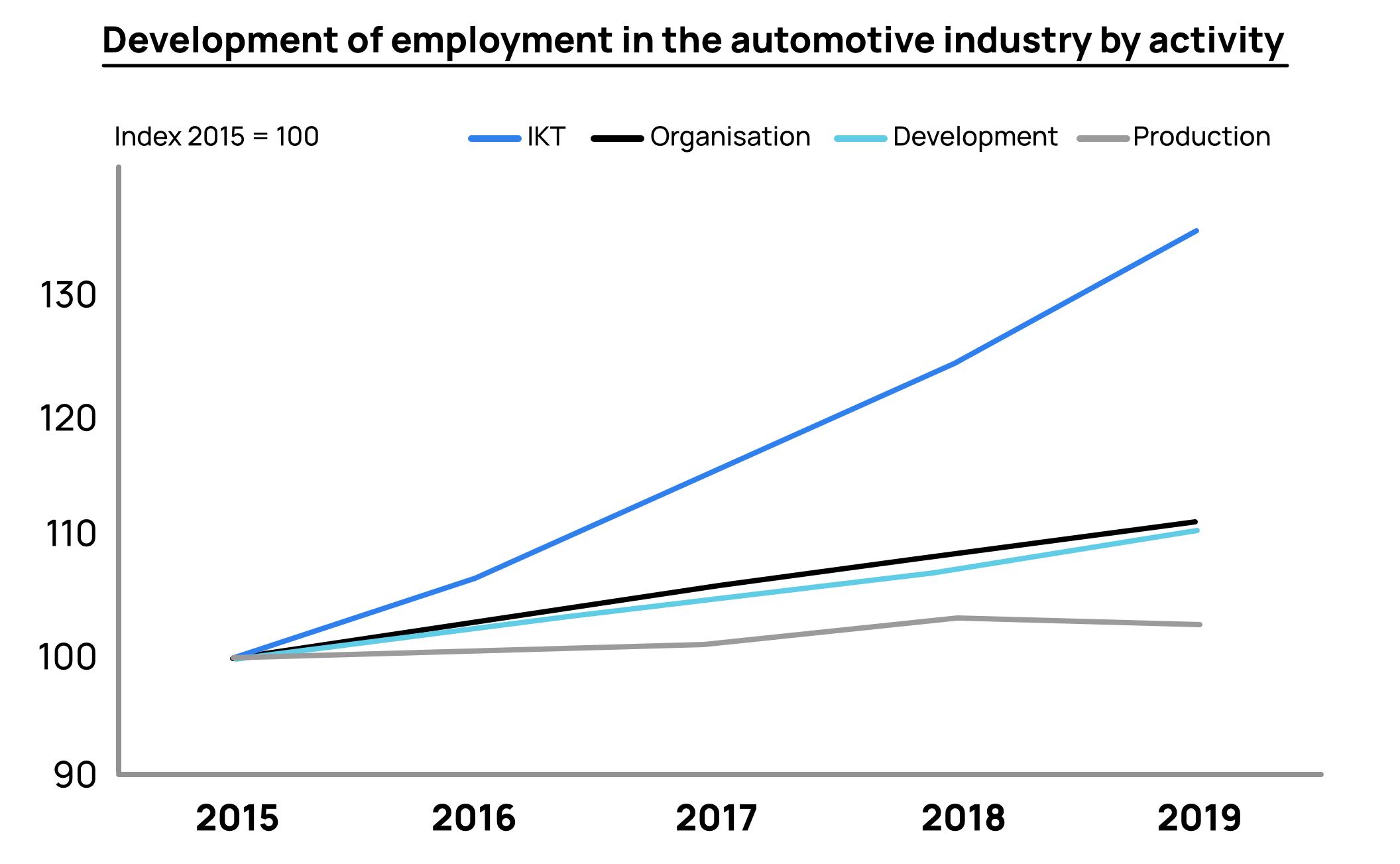
Managing all the effects of change
On the one hand, many new technology-based jobs are being created and IT experts are increasingly in demand. On the other hand, the production workforce is no longer needed and jobs are being cut accordingly. Many companies, such as Audi, have therefore decided to invest in the retraining and qualification of their employees. For example, Audi has set up half a billion euros for this purpose, as Audi board member Sabine Maaßen states.
The value of M&A deals, according to Prof. Dr. Stefan Bratzer, Director of the Center of Automotive Management in Bergisch Gladbach, these retraining measures will enable a total of more than 800,000 employees of the automakers to retain their jobs. However, in his opinion, retraining will not be possible for employees in the supplier industry who manufacture the internal combustion engine. Thus, their job loss is inevitable.
Change in the automotive industry: digitization
Das Auto war bisher ein klassisches Hardware-Produkt, welches über mehrere Jahre hinweg entwickelt und ebenfalls für mehrere Jahre unverändert vertrieben wurde. Heute wird das Auto mit der fortschreitenden Digitalisierung jedoch mehr und mehr zu einem Software-Produkt. Schon heute ist es Kund:innen möglich, auch noch nach der Auslieferung eines Autos weitere Dienstleistungen und Funktionen dazu zu kaufen und ihr Gerät auf den neuesten Entwicklungsstand zu aktualisieren. Dieser Trend wird sich zukünftig noch weiter verstärken.
For the automotive industry, this has some economic advantages. Because instead of a one-off income from the sale of a car, a steady flow of money is now generated by updating, improving and continuously maintaining the car sold. And this over its entire life cycle.
Devices on wheels
It can also be observed that cars are gradually becoming "devices on wheels," analogous to technical devices such as the smartphone. Successful companies such as Apple are considered pioneers here. They have greatly expanded the range of services offered by an established technology - the cell phone. Today, for example, smartphones can be used to stream music and make convenient payments. And infotainment and in-car payment are also already established in some cases for cars. They are increasingly becoming "connected cars" that are permanently online and can be connected to other devices. Whether manufacturers will be able and willing to follow the concepts of large digital groups like Apple in all areas in the future remains an exciting question.
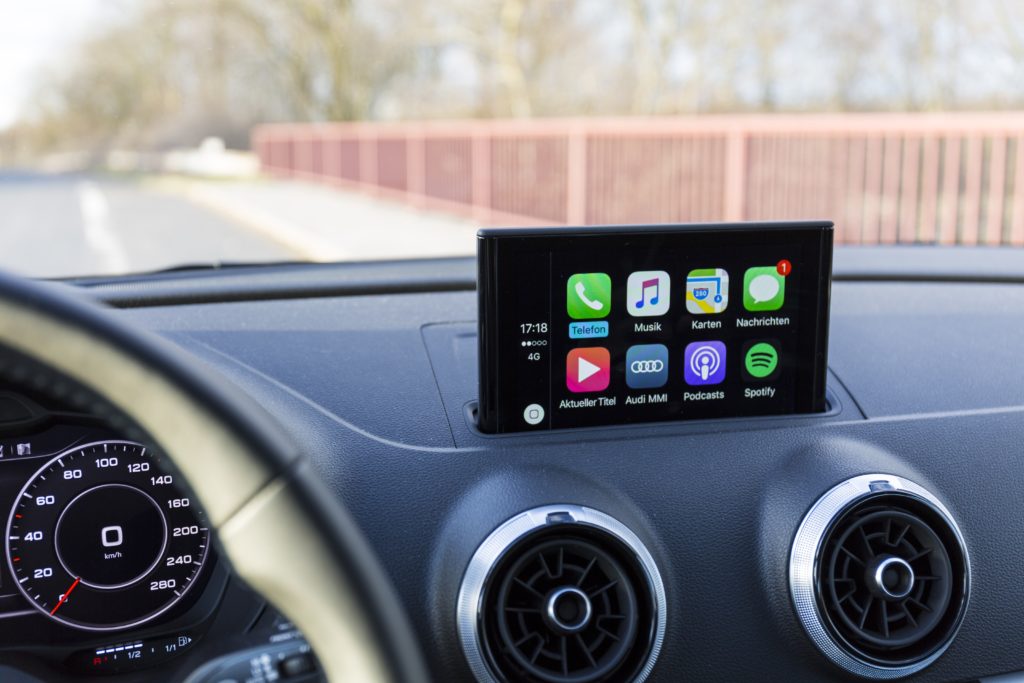
However, it is clear that vehicles will be increasingly "permeated" with IT in the future and that the volume of software will grow steadily. The demand for IT specialists in the automotive industry, which is already very high due to the development and production of e-drives, will grow even more in the future. Vehicle manufacturers, you could say, are increasingly becoming IT companies.
Change in the automotive industry: selling mobility instead of cars
Current developments such as the growing environmental awareness of the population, political efforts to change the climate, the emergence of innovative mobility services such as car sharing, are changing the relationship of consumers to car ownership.
It is already apparent today that "young people in cities in particular (...) have only a low affinity for cars" and are "open to new forms of mobility and providers. [They](...) no longer necessarily want to own their own vehicle." - an assessment by Prof. Dr. Stefan Bratzer, the director of the Center of Automotive Management in Bergisch Gladbach.
New forms of mobility
While many people still own their own car today, the number of cars on German roads will decline sharply in the future; a direct consequence of new forms of mobility. We are talking about services such as car sharing, ridesharing and even robotaxis. Cars will develop into on-demand modes of transport that consumers will be able to switch between seamlessly. Private cars, which spend a large part of their lives just sitting in parking lots or garages, will thus become superfluous.
Customers will then buy mobility services instead of a car. As a result, automakers will quickly find themselves in a situation similar to that of aircraft manufacturers Airbus and Boeing. Just as the latter sell their aircraft to airlines, car manufacturers will also sell their vehicles mainly to mobility service providers. The car brands will no longer be concerned about the end customers.
For traditional car manufacturers, this means a radical change in their business models, which to date have been designed so that everyone can order and buy their own individual car. Tomorrow's consumers will no longer pay attention to the performance features of a car or the image of the manufacturer. Instead, the attractiveness of a brand's mobility platform will become important. In this respect, companies in the automotive industry should already be investing in its development today.
Change in the automotive industry: autonomous driving
Even if it is not yet market-ready today, autonomous driving will become a central component of future mobility. Microsoft is the biggest example of such cooperation.Germany is to, according to German government, Germany is set to become one of the leading countries in the world for developing and testing autonomous driving and ultimately putting it on the road. And according to Alexander Burst, vice president for Automated Driving at Robert Bosch GmbH, "of the three main trends in the automotive industry - electrified, connected and automated - (...) the automated area in particular is just picking up speed."
To accelerate the development of autonomous driving, automakers have recently launched extensive collaborations with IT companies. Microsoft is the greatest example of such cooperation. Collaboration with IT companies is crucial because autonomous driving requires enormous computing power. Traditional car manufacturers or suppliers cannot provide this power themselves. The data centers of IT companies such as Microsoft enable car manufacturers to obtain reliable results quickly and thus significantly increase the speed of development of autonomous vehicles.
Importance of change for HR managers and executives
The difficulty in the upcoming transformation of the automotive industry will not be the mastery or availability of new, digital technologies. Rather, it will be difficult to motivate all employees in the industry to play an active role in shaping the transformation. After all, the current business model of automotive companies is still running successfully and the willingness of employees to embrace transformation is correspondingly low. The task of managers must therefore be to convincingly communicate the need for change in the automotive industry and to win over employees for the process - a task that is anything but easy.
There is a further need for action on the part of managers with regard to the corporate structure of many automotive manufacturers and suppliers, which is still strongly hierarchical and characterized by traditional value systems. If managers want to create an enthusiastic "spirit of optimism" and encourage employees to be fast, agile, innovative and willing to take risks, then highly hierarchical structures must be loosened.
Securing the supply of skilled workers
Another challenge for executives and HR managers in the automotive industry will be to secure the supply of skilled workers. Here, they are confronted with the difficulty that a great many IT specialists are currently needed, while at the same time there is a major shortage of IT specialists. And not just in the automotive industry. The problem reflects the current study "Automotive in Transition" by Pierre Audoin Consultants and Hays: Wider: Around 50% of all executives in the automotive industry consider recruiting skilled workers to be very difficult or rather difficult. In order to succeed in the future, however, companies in the automotive industry must be more attractive as employers.
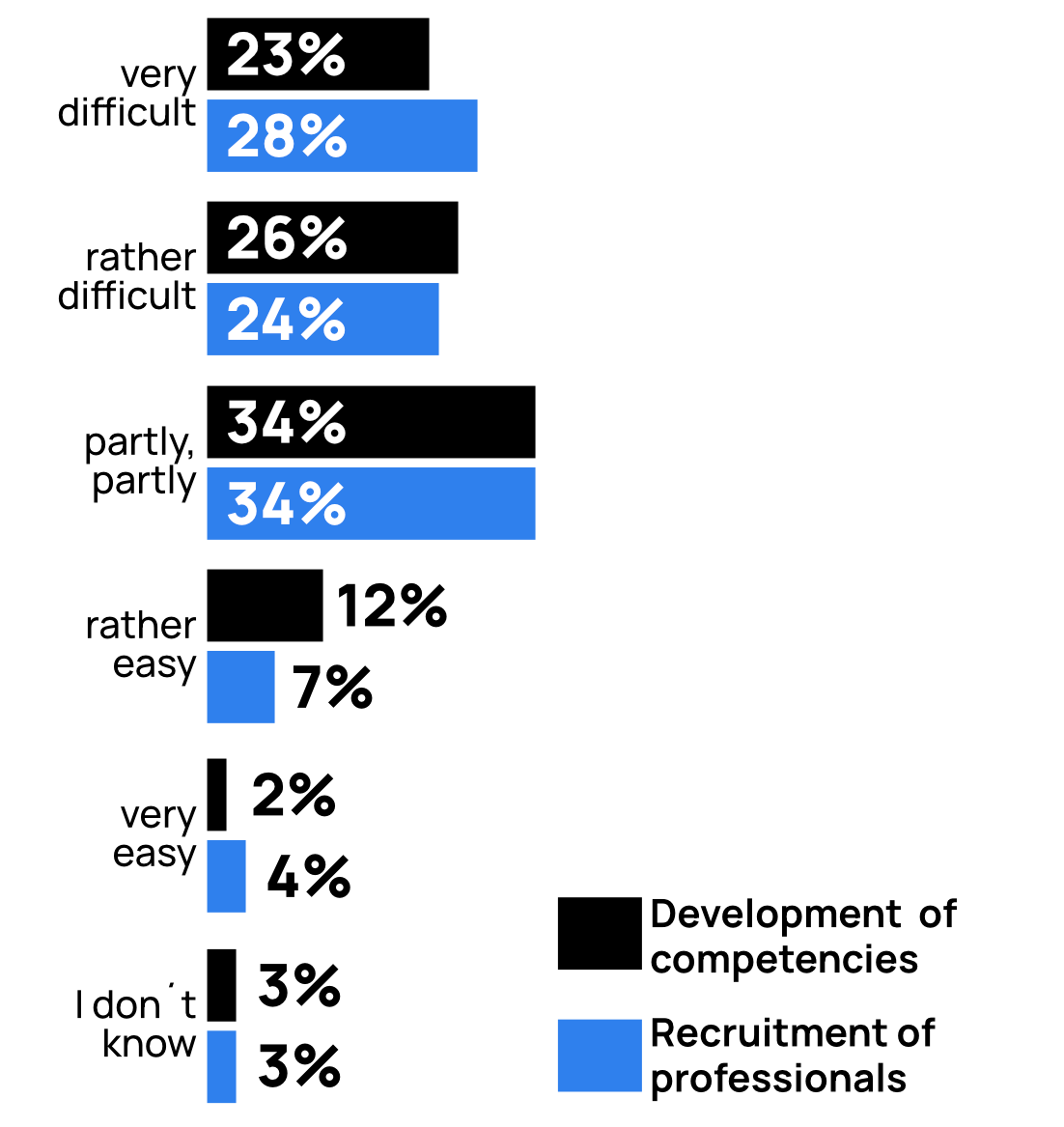
It is just as difficult for managers to develop and build up existing employees internally for new activities. This is not surprising, since the majority of today's employees at automotive manufacturers and suppliers have been subordinated to rigid hierarchies for years, in which they were always assigned the same tasks.
To ensure that employees are nevertheless prepared for new areas of responsibility that arise with the change described above, a large proportion of managers (approx. 80%) already take their employees to training sessions, specialist conferences or workshops, most of which are conducted by external consultants and coaches. Such continuing education and training opportunities will continue to be of great importance in the future. After all, change and transformation will not be the exception, but the rules, also and especially in the automotive industry.

FAQ: Change in the automobile industry
Why is the automotive industry relevant to the economy?
The primary contribution of the automotive industry to the economy is in jobs created. Across 39 car-producing countries examined by OICA, 8,397,451 people work in the auto industry. That represents 5% of the total job roles in direct manufacturing.
What is automotive globalization?
Automotive globalization refers to the increased deconcentration of the automobile industry from developed economies (Japan, EU, United States) and its expansion into emerging economies and other markets (India, Thailand, Vietnam, China, Mexico, and Eastern Europe).
Can AI reduce car accidents?
AI can reduce human errors in accidents by speeding up the reaction time to accident scenarios.

